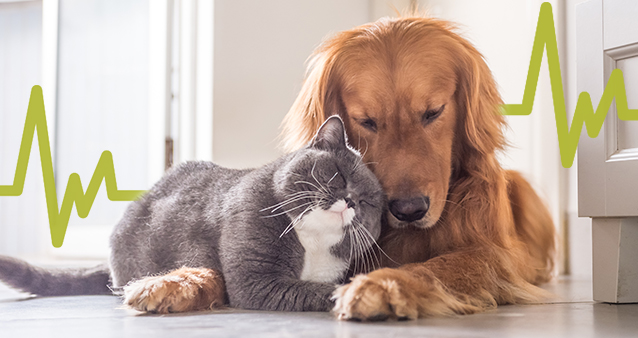Pet ownership is an incredibly rewarding experience, bringing joy, companionship, and love to countless households. Pets are more than just animals; they are beloved members of the family. With this in mind, ensuring the health and well-being of your pets is a priority. This is where pet insurance becomes invaluable. Pet insurance provides a safety net for the unexpected costs of medical care, offering peace of mind for pet owners who want to ensure their pets receive the best care without breaking the bank.
This article delves into the importance of pet insurance, its benefits, the types of coverage available, and how to choose the right policy for your furry friend.
What is Pet Insurance?
Pet insurance is a type of coverage that helps offset the costs associated with your pet’s medical treatment. Similar to health insurance for humans, pet insurance can cover a wide range of veterinary expenses, from routine checkups to emergency surgeries, depending on the plan. Policies are typically designed to reimburse pet owners for some or all of the veterinary costs after a deductible is met, offering both financial protection and peace of mind in times of need.
Pet insurance can help cover a variety of veterinary expenses, including accident-related injuries, chronic illnesses, and routine care. However, the specifics of what is covered will depend on the policy you choose.
Why is Pet Insurance Important?
Pets, like humans, are susceptible to illnesses, accidents, and emergencies that may require costly medical intervention. With rising veterinary fees, pet insurance provides an essential safeguard against the financial burden of treating your pet when unexpected medical issues arise.
In many cases, veterinary treatments can be prohibitively expensive, especially for procedures like surgeries or long-term treatments for chronic conditions. Without pet insurance, these costs can place significant strain on your finances, potentially leading to difficult decisions about whether to proceed with care.
Moreover, pets, like people, are living longer. Advances in veterinary medicine mean that conditions that were once considered fatal can now be treated, extending your pet’s life. However, these treatments can be expensive, and pet insurance ensures that your pet can receive the best possible care without financial limitations.
Key Benefits of Pet Insurance
- Financial Protection: Pet insurance helps protect you from the high costs of veterinary bills. By covering a portion of your pet’s medical expenses, insurance ensures that you are not burdened by overwhelming costs, allowing you to focus on your pet’s well-being rather than finances.
- Access to High-Quality Care: With pet insurance, you are more likely to seek out the best veterinary care without the worry of costs limiting your choices. Many policies allow you to visit any licensed vet, and some even offer coverage for specialist treatments and emergency care.
- Peace of Mind: Knowing that you have pet insurance gives you peace of mind, knowing you’re prepared for unexpected health issues. Whether your pet needs emergency surgery after an accident or requires ongoing treatment for a long-term condition, having insurance can alleviate anxiety over the financial strain.
- Customization and Flexibility: Pet insurance policies are often customizable, allowing pet owners to select the coverage that best fits their needs and budget. Depending on the policy, you can choose from a variety of coverage options, such as accident-only plans, comprehensive plans, or wellness plans for routine care.
- Preventive Care: Many modern pet insurance policies also offer wellness benefits, which cover routine care like vaccinations, flea treatments, and annual checkups. This can help you stay on top of your pet’s health and catch any potential issues early, reducing the risk of expensive emergency care later.
Types of Pet Insurance Coverage
Pet insurance comes in a variety of plans, and it’s essential to choose the one that aligns with your pet’s needs and your financial situation. Here are the most common types of coverage:
- Accident-Only Coverage: As the name suggests, this policy covers accidents and injuries but does not include coverage for illnesses or routine care. It is the most basic and affordable option for pet owners who want to cover unexpected accidents without a large premium.
- Accident and Illness Coverage: This type of policy provides a more comprehensive level of protection, covering both accidents and illnesses. It can include conditions like cancer, infections, and hereditary diseases. These plans tend to be more expensive than accident-only plans but offer more robust protection.
- Comprehensive Coverage (Full Coverage): A comprehensive policy is the most inclusive type of pet insurance. It typically covers accidents, illnesses, surgeries, diagnostic tests, medications, and sometimes even alternative therapies. Comprehensive plans may also offer wellness benefits for routine care, making them ideal for pet owners seeking all-around protection.
- Wellness Plans: Wellness plans are designed to cover routine care, such as vaccinations, flea and tick prevention, and annual checkups. While they don’t cover accidents or illnesses, they are a cost-effective way to ensure your pet receives regular care and stays healthy.
- Hereditary and Congenital Conditions: Some policies offer specific coverage for hereditary and congenital conditions, which are more common in certain breeds. If you own a breed prone to certain health conditions, this type of insurance can provide added peace of mind.
What to Consider When Choosing Pet Insurance
Selecting the right pet insurance plan involves careful consideration of several factors to ensure that the policy suits both your pet’s needs and your financial capabilities.
- Breed and Age of Your Pet: The breed and age of your pet are important factors in determining the type of coverage you need. Some breeds are more prone to specific illnesses, while older pets may require more comprehensive care. Choose a policy that offers coverage for common conditions associated with your pet’s breed and age.
- Cost of Premiums: Pet insurance premiums can vary widely depending on factors such as your pet’s age, breed, and the level of coverage you choose. It’s important to find a policy that fits your budget while providing adequate coverage for your pet’s needs.
- Coverage Limits: Many pet insurance policies come with coverage limits, meaning the amount the insurer will pay out for a particular treatment or condition. Be sure to check the policy’s coverage limits to ensure it provides sufficient protection.
- Deductibles and Co-Payments: Pet insurance policies often come with deductibles and co-payments, which affect how much you pay out of pocket when seeking treatment for your pet. Understand these costs upfront to avoid surprises when making a claim.
- Exclusions: It’s important to carefully review any exclusions in a pet insurance policy. Some policies may not cover pre-existing conditions, or there may be limits on coverage for certain treatments or medications. Be sure to clarify what is and isn’t covered before purchasing a policy.
- Claim Process: Consider the ease of filing claims when choosing an insurance provider. The claim process should be straightforward and transparent, allowing you to quickly receive reimbursement for covered expenses.
The Future of Pet Insurance
As pet ownership continues to rise and veterinary care becomes more advanced, pet insurance is expected to become even more essential for responsible pet owners. With the growing popularity of pets as family members, the demand for comprehensive and flexible insurance plans will only increase.
As new technologies and treatments become available, pet insurance will adapt to cover a broader range of medical services. Additionally, as the cost of veterinary care continues to rise, having a reliable insurance policy will become a critical component of responsible pet ownership.
Conclusion
Pet insurance offers a crucial safety net for pet owners, protecting both the health of their pets and their financial well-being. Whether you choose accident-only coverage, comprehensive insurance, or a wellness plan, the right policy ensures that you are prepared for unexpected medical expenses. With the wide variety of plans available, pet owners can tailor their coverage to their pet’s needs, offering them the best possible care at an affordable cost. Pet insurance not only helps cover medical costs but also provides peace of mind, ensuring that your furry companion can lead a long and healthy life.
By investing in pet insurance, you are taking a proactive step in safeguarding your pet’s health and securing their future, making it an invaluable investment in your pet’s well-being.



